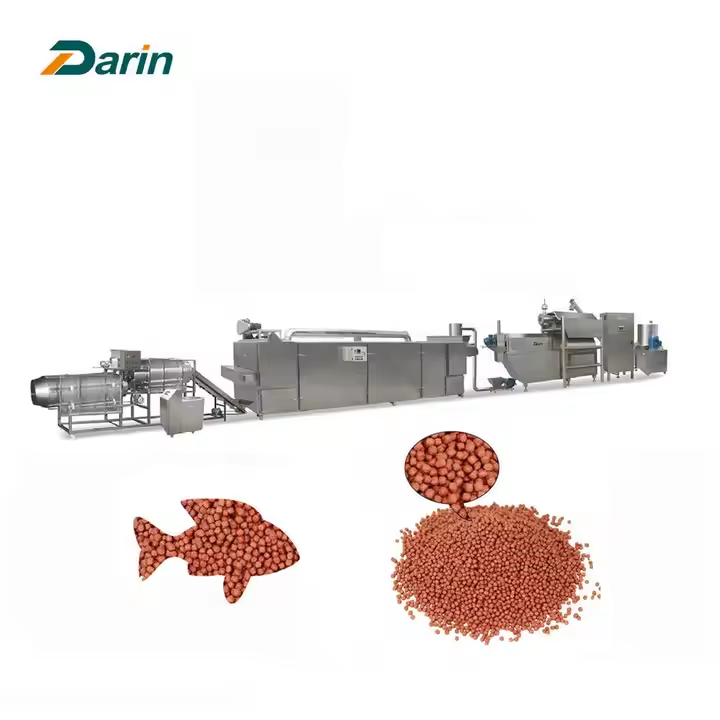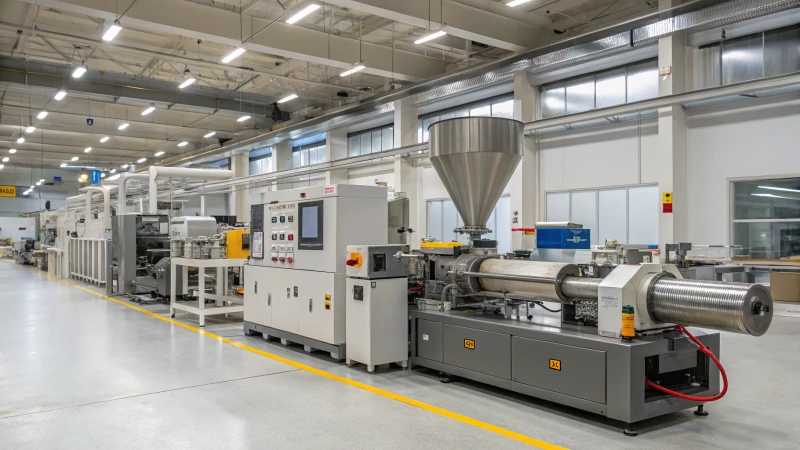
The Importance of Choosing the Right Extruder
Extrusion is a critical process in industries such as plastics, food, and pharmaceuticals. The choice between single screw extruders (SSEs) و twin screw extruders (TSEs) can significantly impact efficiency, product quality, and cost-effectiveness. Understanding the differences between these two extrusion technologies is essential for manufacturers looking to optimize their processes.
Quick Answer: What’s the Difference Single Screw vs. Twin Screw Extruders ?
إن main difference between برغي واحد و آلات البثق ذات اللولب المزدوج lies in their design and processing capabilities:
- Single screw extruders (SSEs) are simpler, cost-effective, and ideal for continuous melting and pumping of materials.
- Twin screw extruders (TSEs) provide better mixing, higher output rates, and more versatility, making them better suited for compounding, reactive extrusion, and complex material processing.
Now, let’s dive deeper into the mechanical, operational, and application-based differences to help you make an informed decision.

1. Basic Working Principles
Single Screw Extruder (SSE)
A آلة بثق برغي واحد consists of a rotating screw inside a heated barrel. The solid material (pellets, powder, or granules) is fed into the barrel, melted, and pushed forward by the rotating screw. The process mainly relies on:
- Friction and shear forces to melt the material.
- سرعة اللولب و درجة حرارة البرميل to control output.
- A downstream die to shape the extruded product.
Twin Screw Extruder (TSE)
A آلة بثق لولبية مزدوجة consists of two intermeshing screws inside a barrel, which work together to convey, mix, and process materials more efficiently. TSEs provide:
- More uniform mixing and melting due to the additional shearing action.
- Enhanced material feeding through positive displacement.
- Greater versatility in compounding, reactive processing, and devolatilization.

2. Key Differences: Design & Functionality
| الميزة | Single Screw Extruder (SSE) | Twin Screw Extruder (TSE) |
|---|---|---|
| Number of Screws | 1 | 2 |
| إمكانية الخلط | معتدل | عالية |
| Material Conveyance | Dependent on friction | Positive displacement |
| Shear & Homogenization | محدودة | ممتاز |
| مرونة المعالجة | منخفضة | عالية |
| الإنتاجية | معتدل | عالية |
| استهلاك الطاقة | أقل | أعلى |
| التطبيق | Simple polymer melting | Complex compounding, blending, and reactive extrusion |
3. Comparison of Processing Capabilities
Material Conveyance
- SSEs use friction and drag flow, which can limit their ability to handle materials with poor flow properties.
- TSEs use intermeshing screws for positive displacementضمان consistent feed rates and better control over material flow.
Melting & Mixing
- SSEs rely on heat and shear, often leading to non-uniform melting.
- TSEs provide superior distributive and dispersive mixingمما يؤدي إلى homogeneous melting and better control over material properties.
Devolatilization (Removal of Volatiles)
- SSEs struggle with efficient venting of volatiles.
- TSEs توفير better devolatilization due to their ability to create high surface area exposure.
سرعة المعالجة
- TSEs generally operate at معدلات إنتاج أعلى than SSEs due to their improved material flow and mixing efficiency.
4. Advantages & Disadvantages of Single Screw Extruders
المزايا
✅ استثمار أولي أقل and operational costs.
✅ Easier to maintain due to simpler design.
✅ Ideal for basic extrusion processes (melting and shaping polymers).
✅ انخفاض استهلاك الطاقة compared to TSEs.
العيوب
❌ قدرة خلط محدودة—not ideal for compounding or blending.
❌ Inconsistent melting for certain materials.
❌ Less efficient feeding of powders and fillers.
5. Advantages & Disadvantages of Twin Screw Extruders
المزايا
✅ Superior mixing and melting efficiency.
✅ Better material feeding, even for powders and low-bulk-density materials.
✅ Higher throughput and better process control.
✅ Capability for advanced processes مثل reactive extrusion, compounding, and polymerization.
✅ Efficient devolatilization for moisture and volatile removal.
العيوب
❌ تكلفة أعلى—both initial investment and maintenance.
❌ Increased power consumption.
❌ More complex to operate and maintain.
6. Industrial Applications
| الصناعة | آلة بثق أحادية اللولب | آلة البثق اللولبية المزدوجة |
|---|---|---|
| بلاستيك | Film, tubing, simple profiles | Compounded plastics, reinforced polymers |
| الطعام | Pasta, snacks | Cereal, textured vegetable protein, pet food |
| المستحضرات الصيدلانية | Simple drug delivery systems | Complex drug formulations, controlled-release tablets |
| المواد الكيميائية | Basic polymer extrusion | Reactive polymerization, additives |
7. Cost & Energy Efficiency
- Single screw extruders نكون more energy-efficient for simple processes.
- Twin screw extruders consume more power but offer higher productivity and better product quality.
8. Choosing the Right Extruder for Your Application
When to Choose a Single Screw Extruder
- لو your process mainly involves melting and shaping polymers.
- إذا كنت بحاجة إلى cost-effective, energy-efficient solution.
- لو mixing is not a major requirement.
When to Choose a Twin Screw Extruder
- لو highly efficient mixing, compounding, or blending is needed.
- If processing powders, fillers, or additives.
- If requiring precise process control and higher output rates.
9. Conclusion: Which One Should You Choose?
If your application is simple, cost-sensitive, and does not require intensive mixing, a آلة بثق برغي واحد is the best choice. However, if you need better control, higher efficiency, and the ability to process complex materials, a آلة بثق لولبية مزدوجة is worth the investment.
Still unsure which extruder is best for your needs? Contact us today for expert guidance on optimizing your extrusion process! 🚀
Would you like a comparison of specific extruder models or help with choosing an extruder for a particular material? Let me know! 😊









